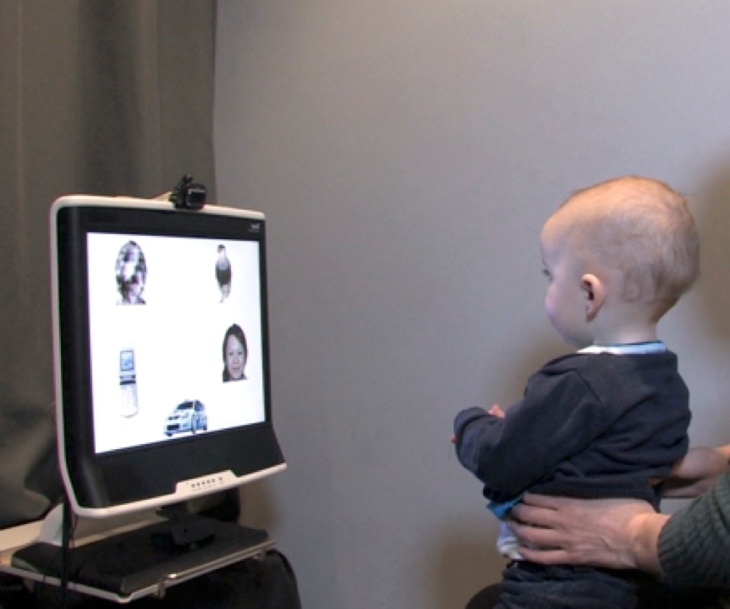
In everyday life, babies are constantly making fine eye movements which are barely visible. The frequency of these movements has been thought to show how engaged an infant is with what they are looking at, and how quickly they process what they are seeing.
In this study, run with colleagues at Birkbeck College, in London, we used eye tracking technology to measure 104 babies (aged 6-8 months) at high or low familial risk for ASD. We examined how often babies moved their eyes when scanning a static image.
We found that typical babies moved their eyes about twice a second. However, those babies who later were diagnosed with ASD tended to move their eyes more frequently – up to almost three times a second. These babies appeared to be scanning the image more rapidly than their peers.
We hope that these findings may in future help contribute to better ways of identifying babies with early signs of possible behavioural difficulties. But they stress that the research is at an early stage and eye movement alone is a far from reliable indicator that a child may later be diagnosed with ASD.
Lead author, Dr Sam Wass said: “We are still at a very early stage in understanding what these results may mean. Adults with ASD can sometimes process visual information more rapidly than other people, and perhaps that was happening for infants in our study. Alternatively, it could be that these babies need a higher level of stimulation, so they move their eyes more frequently to get more stimulation. Or it could be that when they look at something they are not engaging with it in the same way as other children tend to.”
In addition, the babies at high risk for ASD showed little variation in the frequency of their eye movements. Earlier studies have shown that when looking at a new image or scene, most adults show an initial ‘scanning’ phase characterised by frequent eye movement, followed by a phase of less frequent eye movements. This study showed a similar pattern in the babies at low risk of ASD. However, the babies in the group with a higher risk of ASD showed far less variation across time with highly consistent and repetitive timing of their eye movements.
The project, which was hosted at Birkbeck, University of London, is part of the UK BASIS study of infants with older siblings with ASD, and is funded by the UK Medical Research Council and a consortium of charities led by Autistica.
Wass, S.V., Jones, E.J.H., Gliga, T., Smith, T.J., Charman, T., BASIS team, Johnson, M.H. (2015). Shorter spontaneous fixation durations in infants with later emerging Autism. Nature Scientific Reports 5 (8284), 1-8.
